
New Jersey Institute of Technology (NJIT) is a public research university in Newark, New Jersey, with a graduate-degree-granting satellite campus in Jersey City. Founded in 1881 with the support of local industrialists and inventors especially Edward Weston, NJIT opened as Newark Technical School (NTS) in 1885 with 88 students. As of fall 2022 the university enrolls 12,332 students from 92 countries, about 2,500 of whom live on its main campus in Newark's University Heights district.
Larry Dalton is an American chemist best known for his work in polymeric nonlinear electro-optics.
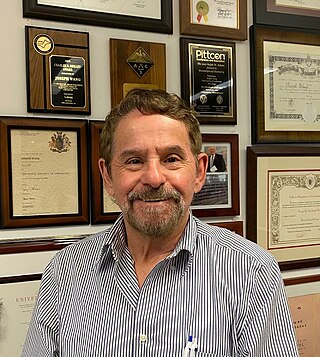
Joseph Wang is an American biomedical engineer and inventor. He is a Distinguished Professor, SAIC Endowed Chair, and former Chair of the Department of Nanoengineering at the University of California, San Diego, who specialised in nanomachines, biosensors, nano-bioelectronics, wearable devices, and electrochemistry. He is also the Director of the UCSD Center of Wearable Sensors and co-director of the UCSD Center of Mobile Health Systems and Applications (CMSA).
Gordon Wallace, AO, FAA, FTSE, FRACI is a leading scientist in the field of electromaterials. His students and collaborators have pioneered the use of nanotechnology in conjunction with organic conductors to create new materials for energy conversion and storage as well as medical bionics. He has developed new approaches to fabrication that allow material properties discovered in the nano world to be translated into micro structures and macro scopic devices.
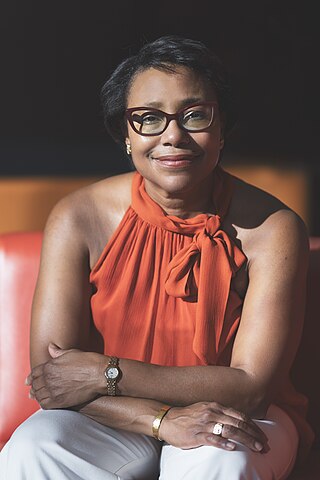
Paula Therese Hammond is an Institute Professor and the Vice Provost for Faculty at the Massachusetts Institute of Technology (MIT). She was the first woman and person of color appointed as head of the Chemical Engineering department. Her laboratory designs polymers and nanoparticles for drug delivery and energy-related applications including batteries and fuel cells.
CatherineJ. Murphy is an American chemist and materials scientist, and is the Larry Faulkner Professor of Chemistry at the University of Illinois at Urbana-Champaign (UIUC). The first woman to serve as the head of the department of chemistry at UIUC, Murphy is known for her work on nanomaterials, specifically the seed-mediated synthesis of gold nanorods of controlled aspect ratio. She is a member of the American Association for the Advancement of Science, National Academy of Sciences, and the American Academy of Arts and Sciences in 2019.
Tebello Nyokong is a South African chemist and distinguished professor at Rhodes University, and a recipient of South Africa's Order of Mapungubwe. Nyokong's work has been published around 450 times including a patent. She was awarded the South African Chemical Institute Gold Medal in 2012, and named one of the Top 10 Most Influential Women in Science and Technology in Africa by IT News Africa. She is currently researching photo-dynamic therapy, an alternative cancer treatment method to chemotherapy. In 2007, she was one of the top three publishing scientists in South Africa, and in 2013 she was awarded the National Research Foundation's Lifetime Achievement Award.
Ali Javey is a professor of electrical engineering and computer sciences at the University of California, Berkeley, a senior faculty scientist at the Lawrence Berkeley National Laboratory, and co-director of the Bay Area Photovoltaic Consortium and the Berkeley Sensor and Actuator Center. His research is focused on materials and device innovation for technological applications, particularly photovoltaics, wearable sensors, nanoelectronics, and programmable materials.
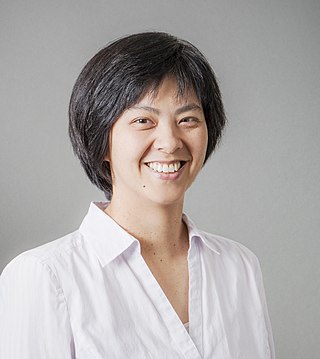
Ellis Meng is the Shelly and Ofer Nemirovsky Chair of Convergent Biosciences and Professor of Biomedical Engineering and Electrical and Computer Engineering in the Viterbi School of Engineering at the University of Southern California, where she also serves as the Vice Dean of Technology Innovation and Entrepreneurship. Meng is highly decorated in the development of novel micro- and nanotechnologies for biomedical applications. In 2009, Meng was named on MIT Technology Review's "Innovators Under 35" List for her work on micropumps that deliver drugs preventing blindness, and she was listed on the 40 Under 40 List of the Medical Device and Diagnostic Industry (MDDI) in 2012.
Anna Christina Balazs is an American materials scientist and engineer. She currently is Distinguished Professor at the University of Pittsburgh and holds the John A. Swanson Chair at the Swanson School of Engineering.
Vincent Rotello is an American materials scientist and engineer currently the Charles A. Goessmann Professor of Chemistry and a University Distinguished Professor at the University of Massachusetts at Amherst and the current Editor-in-Chief of American Chemical Society's Bioconjugate Chemistry. He joined the faculty at the University of Massachusetts in 1993, and has been the recipient of the NSF CAREER and Cottrell Scholar awards, as well as the Camille Dreyfus Teacher-Scholar, the Sloan Fellowships. More recently, he has received the Langmuir Lectureship (2010), and in 2016 he received the Transformational Research and Excellence in Education Award presented by Research Corporation, the Bioorganic Lectureship of the Royal Society of Chemistry (UK), the Australian Nanotechnology Network Traveling Fellowship, and the Chinese Academy of Sciences, President's International Fellowship for Distinguished Researchers. He is a Fellow of both the American Association for the Advancement of Science (AAAS) and of the Royal Society of Chemistry (U.K.). He is also recognized in 2014, 2015 and 2018 by Thomson Reuters/Clarivate as “Highly Cited Researcher”. He is currently the Editor in Chief of Bioconjugate Chemistry, and is on the Editorial Board of 14 other journals. His research program focuses on using synthetic organic chemistry to engineer the interface between the synthetic and biological worlds, and spans the areas of devices, polymers, and nanotechnology/bionanotechnology, with over 550 peer-reviewed papers published to date. He is actively involved in the area of bionanotechnology, and his research includes programs in delivery, imaging, diagnostics and nanotoxicology.
Frances S. Ligler is a biochemist and bioengineer who was a 2017 inductee of the National Inventors Hall of Fame. Ligler's research dramatically improved the effectiveness of biosensors while at the same time reducing their size and increasing automation. Her work on biosensors made it easier to detect toxins and pathogens in food, water, or when airborne.
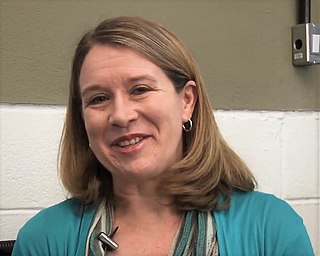
Christy Lynn Haynes is a chemist at the University of Minnesota. She works at the interface of analytical, biological, and nanomaterials chemistry.
Tequila Harris is an American mechanical engineer and professor. She is Professor of Manufacturing at the George W. Woodruff School of Mechanical Engineering. She works on polymer processing and mechanical system design.
Julia Ann Kalow is an assistant professor of chemistry at Northwestern University. She is primarily a synthetic chemist, who works on polymers, photochemistry and tissue engineering. She is interested in synthetic strategies that can turn molecular structure and chemical reactivity into macroscopic properties. She has been awarded the National Science Foundation CAREER Award, Thieme Award and was selected by the University of Chicago as a Rising Star in Chemistry.
Janice Leigh Limson is a South African Professor of Biotechnology, former Chairperson the School of Biotechnology at Rhodes University and the SARChI Chair in Biotechnology Innovation & Engagement at Rhodes University. She is founder and editor-in-chief of the magazine Science in Africa, the first popular online science magazine for Africa. Her research focuses on topics ranging from the development of nanotechnology biosensors for cancer diagnostics, drug delivery, detection of pathogens in food to the design of fuel cell technology.
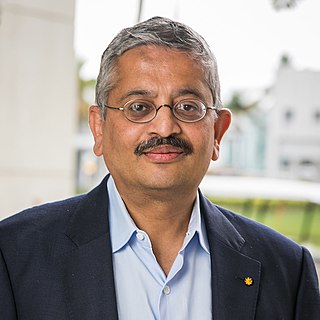
Shekhar Bhansali is the division director in Electrical, Communication and Cyber Systems (ECCS) at the National Science Foundation. He also serves as an Alcatel-Lucent Professor and Distinguished University Professor in the Florida International University (FIU) Department of Electrical and Computer Engineering. Bhansali’s main research interests are in nanotechnology, biosensors, and microfluidics. He holds 40 patents, has published over 300 publications, and has advised more than 40 Ph.D. students and postdoctoral fellows in research. He was elevated to a Fellow of the IEEE in 2023.
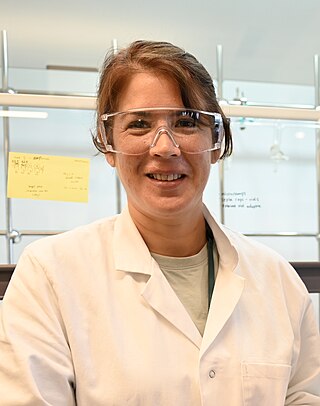
Christine Luscombe is a Japanese-British chemist who is a professor at the Okinawa Institute of Science and Technology. Her research investigates polymer chemistry, organic electronics, organic photovoltaics and the synthesis of novel materials for processable electronics. She serves on the editorial boards of Macromolecules, Advanced Functional Materials, the Annual Review of Materials Research and ACS Applied Materials & Interfaces.

Chenzhong Li is a Chinese-born Canadian & American biomedical engineer, chemist, inventor, professor, and journal editor. Li is the co-Editor-in-Chief of the journal Biosensors and Bioelectronics (Elsevier) and the associate editors of journals RESEARCH (AAAS) and Biosensors (MDPI).

Wei Gao is a Chinese-American biomedical engineer who currently serves as an assistant professor of medical engineering at the California Institute of Technology (Caltech). Gao has been a professor at Caltech since 2017 and is an associate editor of the journals Science Advances, npj Flexible Electronics (Nature), Journal on Flexible Electronics (IEEE), and Sensors & Diagnosis.









